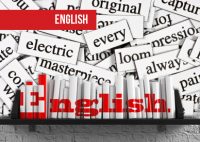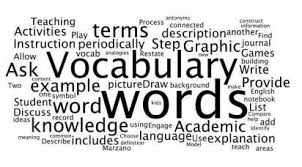Comprehension For SBI PO set – 12

Comprehension Set – 12
India is a country of villages. Rural population still dominates the urban population as far as the number is considered. This is despite the fact that there is rampant migration of rural families to urban centres. Generally, the gains of being a unit of the urban population are less than the disadvantages and risks that are in-built in the urban life. Crime, riots, etc are some of the examples of such risks of urban life. The forces that generate conditions conducive to crime and riots are stronger in urban communities than in rural areas. Urban living is more anonymous living. It often releases the individual from community restraints more common in tradition-oriented societies. But more freedom from constraints and controls also provides greater freedom to deviate. And living in the more impersonalized, formally controlled urban society means that regulatory orders of conduct are often directed by distant bureaucrats. The police are strangers executing these prescriptions on an anonymous set of subjects. Minor offences in small town or village are often handled without resort to official police action. As disputable as such action may seem to be, it results in fewer recorded violations of the law compared to those in the big cities. Although perhaps causing some decision difficulties for the police in small town, formal and objective law enforcement is not always acceptable to the villagers. Urban area with mass population, greater wealth, more commercial establishments and more products of our technology also provide more frequent opportunities for theft. Victims are impersonalized property is insured, consumer goods in more abundance are vividly displayed and are more portable. The crime rate increases despite formal moral education given in schools.
1. Which of the following would be the best title for the above passage?
(a) Crime and Punishment
(b) Hazards of Urban Life
(c) Lure of Village Life
(d) Rural-Urban Life
(e) Urban Crimes and their Reasons
2. The passage mainly emphasizes the
(a) comparative account of wealth in rural and urban areas
(b) increasing crime rate in rural areas
(c) need for formal moral education to be given in schools
(d) reasons for growing crime rate in urban centres as compared to that in rural areas
(e) None of these
3. The author thinks that risks and disadvantages are
(a) more than the gains in urban life
(b) almost negligible in rural life
(c) outweigh the gains of rural life
(d) surpassed by the gains of urban life
(e) None of these
4. Which of the following is a characteristic of an urban setting?
(a) Unreported minor crimes
(b) Deviation from freedom
(c) Less forceful social control
(d) Minimal opportunities of crime due to better law enforcement
(e) Fewer recorded violations of the law
5. Which of the following statements in TRUE in the context of the passage?
(a) The display of consumer goods in the main case of crime.
(b) Lack of personal contacts increases crimes in urban areas
(c) Small communities have more minor crimes than in urban centres.
(d) Urban crimes cannot be prevented.
(e) Police in urban areas settle minor disputes without official action.
6. Which of the following inference(s) can be drawn from the contents of the passage?
(A) Migration of people from rural areas to urban centres is almost negligible.
(B) Strangers can enforce laws in more impartial manner than known people can.
(C) Wealth has concentrated more in urban centres than in the rural areas.
(a) A and B only
(b) B and C only
(c) A and C only
(d) All the three
(e) None of these
7. The behavior of people is generally moulded because of social control in
(a) formally controlled urban societies
(b) the presence of the police authorities
(c) an anonymous form of living
(d) non-traditional societies
(e) None of these
8. It can be inferred from the passage that urban crime can be controlled by
(a) greater emphasis on moral education
(b) enforcement of law by distant bureaucrats
(c) vivid display of expensive consumer goods
(d) making expensive consumer goods less portable
(e) None of these
9. The author’s view of ‘Traditional Societies’ is best expressed by which of the following?
(a) They provide less freedom for the individual in many circumstances.
(b) They have lower crime rates because of the moral teachings in schools.
(c) They provide inadequate freedom for personal movements and travel.
(d) They do not have adequate modern technology.
(e) They are ruled and controlled by distant bureaucrats.
10. According to the passage, the crime in small towns
(a) is less frequently reported or dealt with officially
(b) is brought well under control by distant bureaucrats
(c) leads to an impersonalized style of living
(d) is often dealt with objective law enforcement
(e) always causes difficulties for the police authorities
11. Which of the following statements is NOT TRUE in the context of the passage?
(a) Moral education imparted in schools is ineffective in checking crime rate.
(b) There is less freedom in the current society than in a traditional society.
(c) Urban areas are thickly populated and commercialized.
(d) Anonymous living in urban areas may lead a freedom to deviate from rules.
(e) Urban areas provide more opportunities for crime than rural areas do.
12. According to the passage, all of the following contribute to higher crime rates in urban areas
EXCEPT
(a) vivid display of consumer goods
(b) higher standard of living
(c) urban impersonalized living
(d) increasing population
(e) inadequate police force
Directions (Q. 13-16): Choose the word which is most SAME in meaning to the word printed in bold as used in the passage.
13. SUBJECTS
(a) topics
(b) people
(c) crimes
(d) rules
(e) provinces
14. HANDLED
(a) reported
(b) settled
(c) dispensed
(d) punished
(e) judged
15. DISPLAYED
(a) exhibited
(b) kept
(c) rested
(d) removed
(e) sold
16. CONDUCIVE
(a) prohibitive against
(b) helping to reduce
(c) prone to minimize
(d) tending to promote
(e) helping to deteriorate
Directions (Q. 17-20): Choose the word which is most OPPOSITE in meaning to the word printed in bold as used in the passage.
17. DEVIATE
(a) obviates
(b) break
(c) locate
(d) follow
(e) concentrate
18. VIVIDLY
(a) unintentionally
(b) unimpressively
(c) unscrupulously
(d) unwillingly
(e) unpopularly
19. RELEASES
(a) liberates
(b) closes
(c) confines
(d) provides
(e) strengthens
20. RAMPANT
(a) reluctant
(b) enforced
(c) uninhibited
(d) unrestricted
(e) controlled
Answer key:
1. (b) 2. (d) 3. (a) 4. (c) 5. (b) 6. (b) 7. (e) 8. (d) 9. (a) 10. (a) 11. (b) 12. (e) 13. (b) 14. (b) 15. (a) 16. (d) 17. (d) 18. (b) 19. (c) 20. (e)




